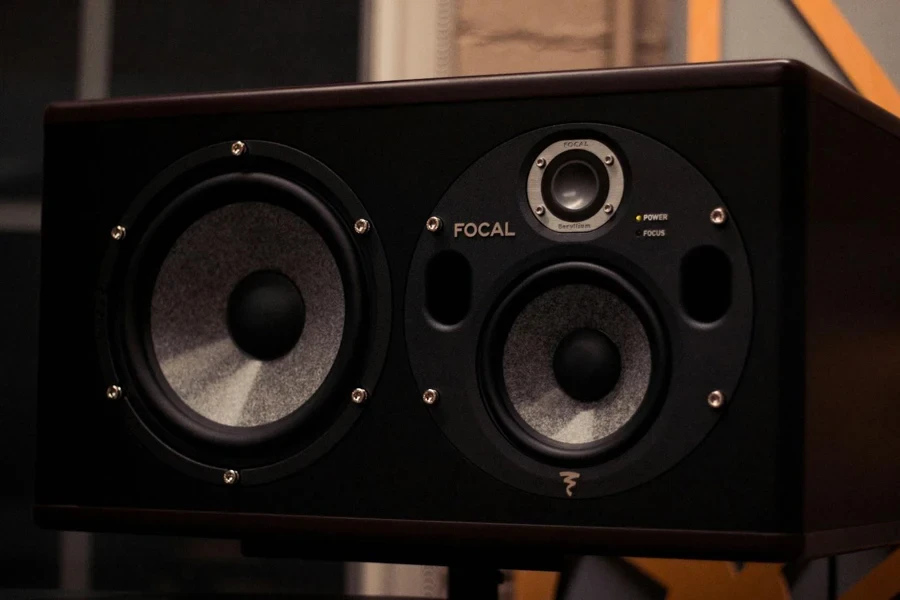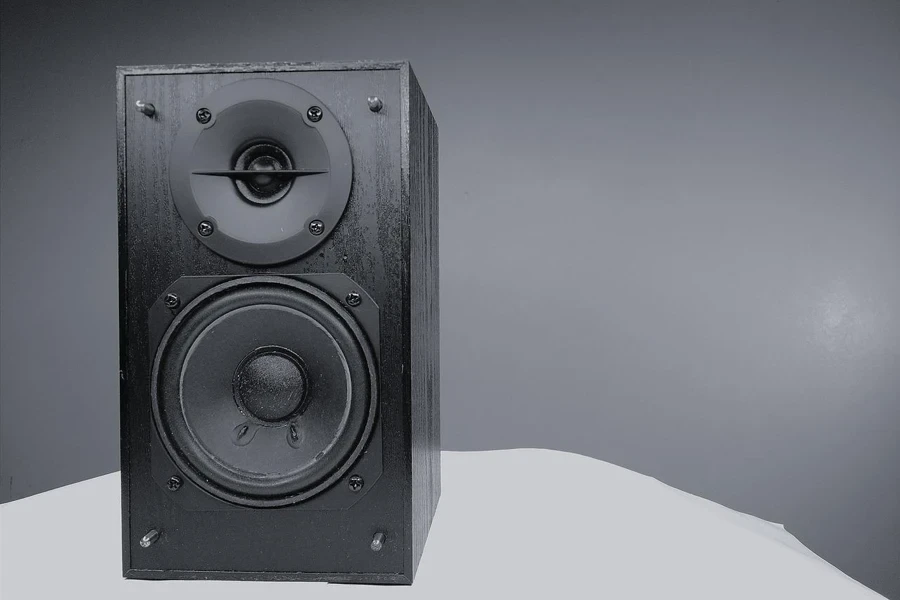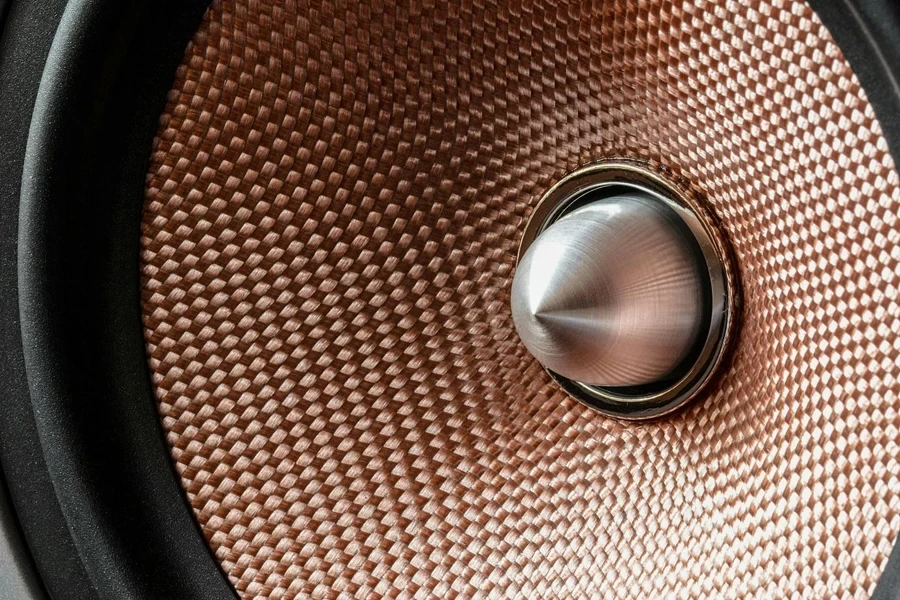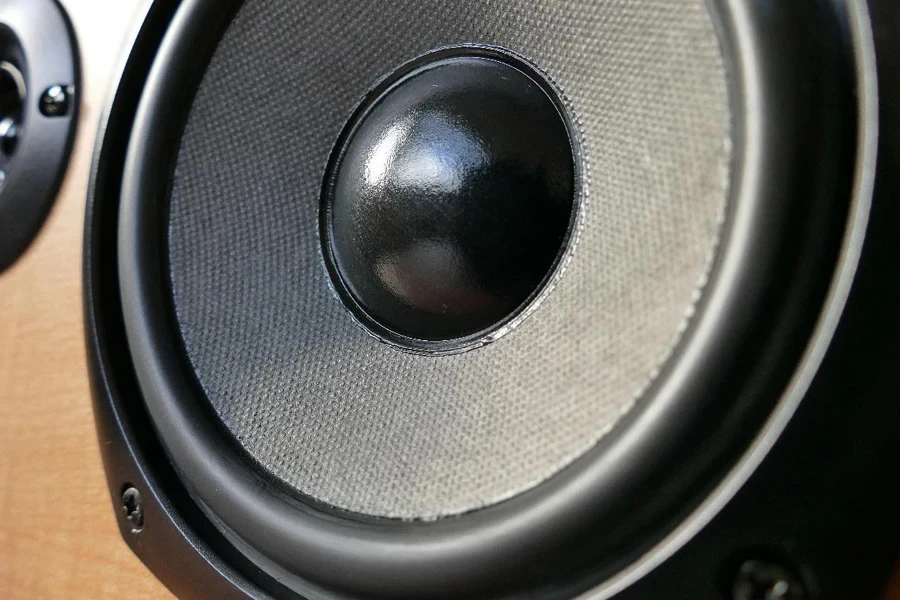Subwoofers are essential for improving audio quality in different environments like advanced home entertainment setups and top-notch car audio systems. Keeping up with the trends and innovations is crucial for industry experts looking to invest in quality sound equipment. This guide offers an overview of the subwoofer market’s expansion and the technology driving its evolution towards the future. It also highlights some of the models that are shaping consumer preferences. By staying informed about these changes and advancements, buyers can make decisions that align with industry standards in the market.
Table of Contents
● Growth, trends, and regional dynamics
● Key innovations in subwoofer technology and design
● Top-selling subwoofer models shaping consumer preferences
● Conclusion
Growth, trends, and regional dynamics

Global market growth and projections
The subwoofer market is growing worldwide due to increased industry demand. The Insight Partners experts reported that the market size is expected to grow from $1,132 million in 2023 to $1,905 million by 2034 at a Compound Annual Growth Rate of 6.7%. This upward trend emphasizes the significance of top-notch sound systems in homes and vehicles. Higher disposable incomes and advancements in technology are driving the market growth further.
Key market drivers
The subwoofer market is experiencing growth due to the increasing need for better audio quality in cars and homes where people want a more immersive sound experience. Advancements in wireless technology and smart features enhance connectivity options within the market, which drives the demand. Subwoofers that seamlessly blend with wireless and smart home setups are gaining popularity due to their convenience while maintaining sound quality standards.
Regional insights
North America takes the lead in the subwoofer market scene due to its adoption of technology and consumers’ strong desire for high-quality audio systems. The Insight Partners states that this domination is supported by investments in research and development in countries like the United States and Canada. With these innovations and a mature market for home audio systems, North America has emerged as a top influencer worldwide. The region’s market leadership is expected to be upheld as consumer preferences change and a strong emphasis on innovation and quality persists.
Key innovations in subwoofer technology and design

Material evolution and its impact on performance
Subwoofer technology has seen progress over the years due to advancements in the materials used for building them, which directly impact how well they perform. Previously, subwoofers were made using materials like plywood and Medium Density Fiberboard (MDF). While these materials were strong enough for the job, they had difficulty controlling vibrations. This could result in noise and distortion due to resonance issues. Adopting materials like Kevlar carbon fiber and aluminum has effectively addressed these previous limitations. Kevlar is widely recognized for its strength, and it is now commonly employed in subwoofer cones to enhance their capability to withstand greater power and deliver more defined bass without bending or flexure. Another notable advancement is the integration of carbon fiber, which provides a lightweight yet rigid framework that enhances the reactivity of the subwoofer cone, leading to enhanced sound fidelity across a broader spectrum of frequencies.
Enhanced sound quality through material innovation
The arrival of advanced materials has also brought about enhancements in audio quality. There has been an improvement in the quality thanks to the use of advanced materials over traditional ones, such as MDF, which could distort sound due to their tendency to vibrate. Aluminum enclosures help to minimize unwanted resonances and result in cleaner bass output. The heat dissipation capability of this material also enables subwoofers to be operated at high levels for long durations without heating issues, thus ensuring consistent performance even with prolonged usage. In addition, employing multiple layers of materials in creating the cone boosts the toughness of the subwoofer while keeping it elegant enough for sound reproduction, especially when it comes to those frequencies where getting the bass just right is essential.
Modern design innovations

Material science advancements have allowed designers to explore possibilities in subwoofer design boundaries. Now, subwoofers can provide deep and powerful bass thanks to lightweight yet durable materials like carbon fiber and Kevlar. These advanced materials allow large drivers to be placed in small enclosures without sacrificing performance. Moreover, adding internal bracing and reinforced cabinets has strengthened the structure of subwoofers, reducing cabinet vibrations that could affect sound quality. Strategically positioning these brackets helps manufacturers minimize the impact of standing waves in the enclosure to enhance quality in acoustic settings.
Advanced techniques for managing resonances
Contemporary subwoofer models also utilize unique methods to regulate room resonances that greatly influence the quality produced by them. One popular method involves employing bass equalization technology that uses signal processing (DSP) to automatically tune the subwoofer’s performance according to the room’s acoustics. This feature guarantees that the bass is evenly spread across the room without any areas where it might sound deficient or excessively reverberant. A different advancement involves employing radiators that work alongside the driver by responding to air pressure changes inside the enclosure to enhance the low-frequency output without requiring a bigger cabinet or increased power consumption.
Future trends in subwoofer technology
In the future, incorporating eco-friendly materials and advanced technologies will transform subwoofer design significantly. The use of materials such as recycled composites and biodegradable polymers is under exploration for both enclosures and components to lessen the impact of production. Moreover, introducing materials that adjust or react to changes presents intriguing opportunities. For example, self-repairing materials could be applied in subwoofer cones to fix damages, autonomously enabling durability and reliable performance over time.
Top-selling subwoofer models shaping consumer preferences

Balancing power and compactness: The SVS SB-1000 Pro
The SVS SB-1000 Pro stands out as a top option for individuals seeking a subwoofer that offers good performance without overwhelming the space it’s placed in. With its 12-inch front firing driver and 325-watt RMS amplifier working together seamlessly, this model delivers impactful bass that’s accurate and distinct, making it a perfect fit for rooms of small to medium sizes. The small size of this device (measuring 13.5 inches) makes it easy to integrate into any arrangement effortlessly, and its smartphone app control provides a level of personalization usually found in more premium models. The users can conveniently adjust volume levels, phase settings, and low-pass filter options to ensure the best possible performance that suits their surroundings.
Affordable power: The Monoprice SW-12
If you’re looking to stick to a budget when shopping for a subwoofer, the Monoprice SW-12 is a choice that balances affordability and quality well. With its 12-inch driver and 400-watt amplifier, this subwoofer packs a punch by delivering immersive bass tones that can compete with priced options on the market. The design of its ported enclosure also helps optimize performance, resulting in more bass without draining too much power. The SW12 offers quality at a reasonable price point and is a top choice for enhancing your audio experience without overspending.
High-end performance in a small package: The SVS 3000 Micro
The SVS 3000 Micro showcases the advancements in subwoofer technology by providing top-notch performance in a compact design. This model features two 8-inch drivers opposite each other and an 800-watt RMS amplifier for delivering bass that belies its footprint. By working in tandem, the dual drivers effectively eliminate any cabinet vibrations, ensuring that the entirety of the energy is directed toward generating undistorted audio. The 3000 Micro is perfect for anyone looking for bass in small apartments or cozy home theaters.
Deep bass in a compact form: The KEF KC62
The KEF KC62 sets standards for subwoofers by delivering exceptionally deep bass despite its small footprint of only 10 inches. Using KEF’s Uni Core technology that combines two drivers with overlapping voice coils for performance, the KC62 achieves a frequency response as low as 11Hz, a capability usually found in larger and pricier subwoofers. The KC62 has gained popularity with music enthusiasts who appreciate its ability to produce impactful bass despite its size – a perfect blend of power and elegance.
Musical precision: The RSL Speedwoofer 10S MKII
The RSL Speedwoofer 10S MKII is highly praised for its qualities as it delivers rich bass that beautifully complements intricate music compositions. Equipped with a 10-inch front firing driver and a 350-watt RMS amplifier, this subwoofer is designed to provide detailed bass output that works well for music and movies. Thanks to incorporating signal processing (DSP), you can customize the subwoofer’s performance to suit the acoustics of your listening space with precision adjustments.
Dynamic low-end: The Klipsch R-120SW
The Klipsch R120SW is known for its capability to produce powerful bass without any noticeable distortion issues. This speaker features a 12-inch copper spun IMG woofer and a 200-watt RMS amplifier that work together to deliver an impactful sound that enhances music and movie experiences. The front-firing driver and the designed port ensure that the bass is projected with strength and clearness, making it a great option for individuals seeking to enrich their home theater setups with strong and immersive bass frequencies. The R120SW is a top pick for shoppers looking for a blend of style and functionality due to its performance and attractive design.
Conclusion

The subwoofer market is set to grow as technology and changing consumer preferences drive the demand for better audio experiences forward. The wide variety of choices accessible to industry experts and companies results from progress in materials used in construction, design, and performance improvements. By keeping up with these changes, businesses can make decisions when acquiring products that match trends, thus enabling them to provide top-notch audio solutions in a market that is becoming more competitive.




